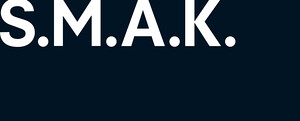THERE IS A MAN and more
March 10–June 3, 2018
An Artist or a Computer | Conceptual works from the 1970s
March 10–May 13, 2018
Jan Hoetplein 1
9000 Ghent
Belgium
Hours: Tuesday–Friday 9:30am–5:30pm,
Saturday–Sunday 10am–6pm
T +32 9 323 60 01
info@smak.be
Guillaume Leblon: THERE IS A MAN and more
Since the end of the 1990s, Guillaume Leblon (1971, Lille, France) has explored the expanded field of sculpture. Through his diverse practice, ranging from sculpture and site-specific installations to film and performance, and his astute manipulation of the built environment, Leblon has acquired a prominent position in the contemporary art world.
Leblon’s oeuvre sketches an intriguing world that shifts between abstraction and figuration while questioning the ceaseless tension between materiality and immateriality, appearance and disappearance, and creation and destruction. Leblon manipulates shapes and segments borrowed from the everyday, including natural, domestic, autobiographical and architectural habitats so as to evoke the uncanny and ephemeral and to affect as well as stimulate spatial and temporal perceptions. Although Leblon’s objects are designed as conceptual structures, they often function on a poetic level. In his universe, the familiar grows unfamiliar and immediately recognizable references turn emblematic and metaphorical. In so doing, he avoids intellectual determinism and encourages multiple readings based on personal experiences.
For the exhibition THERE IS A MAN and more—which is the artist’s first major solo show in Belgium—Leblon presents a selection of work from the last ten years that provides a remarkable insight into the many aspects of his practice. Conceived as an artwork in itself, the exhibition forms a promenade or a landscape in which the human body is simultaneously central and absent. The seminal sculptural installation THERE IS A MAN (2014–16), recently acquired by S.M.A.K., occupies a central position in the exhibition.
Teresa Burga: An Artist or a Computer?[1]
Conceptual works from the 1970s
Teresa Burga (1935, Iquitos, Peru) was active in the avant-garde art scene in the Peruvian capital, Lima. She started her activities in the 1960s as a pop artist and later turned to conceptual art. Against this background, she seemed to be doomed to remain invisible: she was an artist, a woman and Peruvian under a military regime, and a rebel in a traditional patriarchal system. Moreover, her work did not have the figurative, folkloric character that was expected, but was conceptual, immaterial and leaned more towards scientific research.
In the 1970s, Teresa Burga created experimental installations based on administrative reports, meticulous diagrams, educational objects and designs for absurd machines. They were the artistic expression of her research into social phenomena in her immediate surroundings, based on poems, her body and the Peruvian middle class to which she belonged. Without being openly political, Burga’s unorthodox activities called into question various dimensions of modern society, such as images in mass culture, the identity of women and the automation and bureaucratisation of work and leisure.
Teresa Burga: An Artist or a Computer? provides an insight into Burga’s conceptual works on the basis of time and language-related installations and drawings that explore new forms of communication.
[1] The exhibition title refers to an interview with Teresa Burga that was published under the same heading in the Peruvian magazine Correo (17 July 1972, p. 23).



